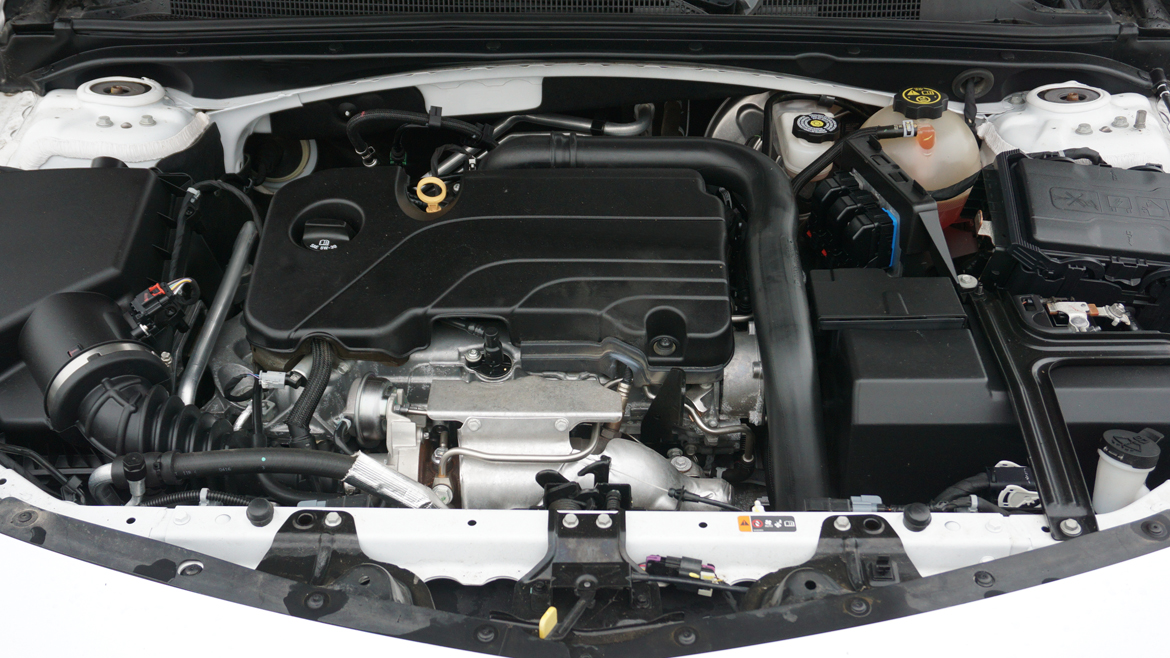Delivering the Advanced Performance Requirements of GF-6 Lubricants
In the last five years, the federal government has accelerated regulations to reduce greenhouse gas emissions and mandate significant fuel economy improvements in passenger cars and light-duty trucks by model year 2025. As a result, the demands placed on engine oils have become increasingly complex.
In large part, these new demands can be attributed to the changes in engine and transmission designs that OEMs have had to make in order to meet higher fuel economy standards. As seen in the graph above, corporate average fuel economy (CAFE) fleet targets will rise dramatically over the next two decades. In an effort to hit these targets, smaller displacements, gasoline direct injection (GDI), CVT and 6 thru 9 speed transmissions have become common throughout the auto industry. With engines getting smaller and power densities going up, lubricants must perform in much more stressful conditions.
Historically, as engine oil performance specifications have evolved, treat rates have typically dropped. This has been true with each passing ILSAC category, from GF-1 to GF-5. But with the proposed requirements laid out in the GF-6 category, significant improvements in engine oil performance will have to be made across the board, especially in those categories pertaining to fuel economy, corrosion protection, oxidation control and engine cleanliness. New tests that reflect the added stress GDI engines place on lubricants are being considered for GF-6.

In the past, the reduction in engine oil treat rates has largely been due to the improvements made in raw material quality (i.e., base oils), along with an evolving understanding of the relationship between additive chemistry and engine hardware. This has allowed for targeted improvements in very specific areas of lubricant performance. Due to new proposed GF-6A targets, the industry will see a reverse in the trend to lower treat rates. For the first time, additive chemistry must deliver improvements in every aspect of protection and fuel economy.
The chart above illustrates how performance requirements for relative fuel economy, relative oxidation and weighted piston deposits have gone up with each passing ILSAC category. Power densities (Average HP/liter) have also increased rather steadily as engine hardware has advanced. With GDI engines now beginning to dominate the market, Lubrizol believes that engine oil formulation has reached a tipping point in which new performance demands will require higher concentrations of specific additive components when compared to ILSAC GF-5.
Set for licensing in Q1 2018, ILSAC’s GF-6 engine oil specification aims to better suit GDI engine designs by improving lubricant robustness, increasing cleanliness and durability, and producing higher fuel economy throughout the entire oil change interval. Among the many changes in the performance requirements of engine oils from GF-5 to GF-6 (all of which are proposed), the most notable will be improved viscosity, deposit, and oxidation control, as well as very significant increases in fuel economy improvement (FEI). Protecting against the occurrence of engine oil-caused, low-speed pre-ignition (LSPI), along with increased wear protection for various engine components such as timing chains and valve trains, will also be the primary focus of GF-6 lubricants.
In addition, GF-6 may be split into two separate categories: GF-6A and GF-6B. The principle difference between the two categories would lie in the oils’ viscosity grade and high temperature, high shear (HTHS) properties. GF-6B oils would provide the same durability performance as GF-6A, but with lower HTHS to enable enhanced fuel economy. GF-6A lubricants will be backwards compatible with GF-5 and its predecessors, while GF-6B will not.
When asked about the newly proposed performance requirements set forth in GF-6, Lubrizol’s Regional Business Manager of Passenger Car Motor Oils, Martin Birze, said:
“The performance bar is being raised. Six new engine tests will push our engine oil formulating approach to a new level – new high performance engines will require higher performance engine oils. CAFE requirements are setting new fuel economy standards that the industry must achieve. Our goal is to ensure GF-6 is a real upgrade delivering better efficiency with uncompromised performance, and we at Lubrizol strongly believe GF-6 will be a meaningful upgrade over GF-5.”
Although some of the proposed GF-6 performance requirements will likely be adjusted, lowering carbon emissions will continue to be a top priority of regulating agencies. And, as engine makers search for new and advanced ways to comply with more stringent federal regulations, the role that engine oils play will become increasingly important, both as an enabler of new engine technology and a direct contributor to fuel efficiency.









